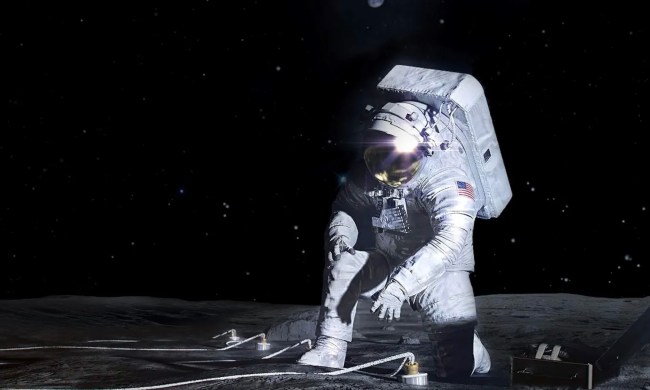You don’t have to be a pamphlet-distributing, faux leather-shoe wearing militant vegetarian to realize that vegetables are going to be pretty important in space. Whether it’s long periods of time spent on the International Space Station or the eventual dream of colonizing other planets, the ability to grow veg outside of Earth’s atmosphere is going to be crucial for our survival. Or, at least, our ability to enjoy life in the stars without suffering from a massive lack of fiber and assorted nutrients.
Fortunately, science is here to help. Scientists in Antarctica this week announced that they have successfully grown the first crop of vegetables without the help of earth, daylight or pesticides. This was achieved using cutting-edge hydroponics techniques — including replacing the soil with nutrient-rich water and using LED lighting to double for sunlight. While the experiment took place on Earth, the scientists believe that the demonstration will help pave the way for future astronauts to cultivate fresh food on other planets.
Investigators working at Germany’s Neumayer Station III research station picked 3.6 kilograms (eight pounds) of salad greens, 18 cucumbers, and 70 radishes. These were grown in a high-tech greenhouse, which kept the soon-to-be food at temperatures considerably in excess of the chilly negative-4 degrees Fahrenheit found outside. The German Aerospace Center DLR, which is in charge of coordinating the project, claims that from next month scientists will be able to harvest an even more impressive four to five kilograms of fruit and vegetables. In the future, they plan to expand their crop to include a large number of other varieties of green. The project began in January when the greenhouse arrived in Antarctica.
This isn’t the first time that we have heard about scientists growing space vegetables. Earlier this year, NASA reported that the crew of the International Space Station successfully harvested greens. These included mizuna, aka “spider mustard,” red romaine lettuce, and Tokyo Bekana cabbage. That’s pretty impressive in its own right (and, you know, has the added benefit of having actually been carried out in space!). However, according to a DLR spokesperson, the Antarctic project promises to produce a much wider range of vegetables.
Suddenly life in space just got a whole lot more appealing. Unless you really, really hate salad!


